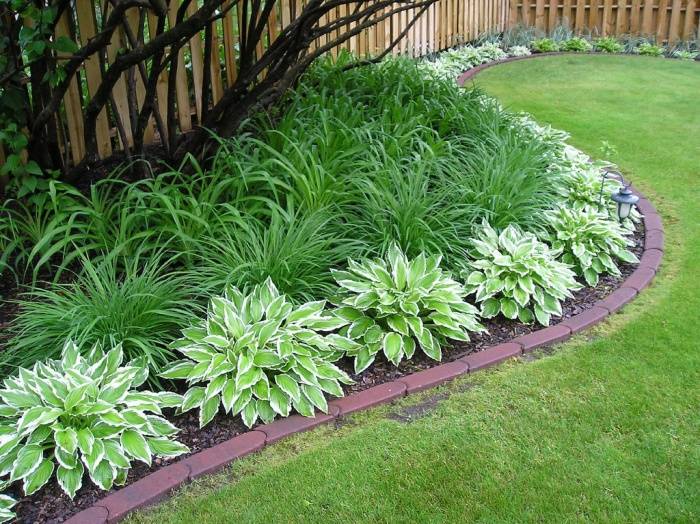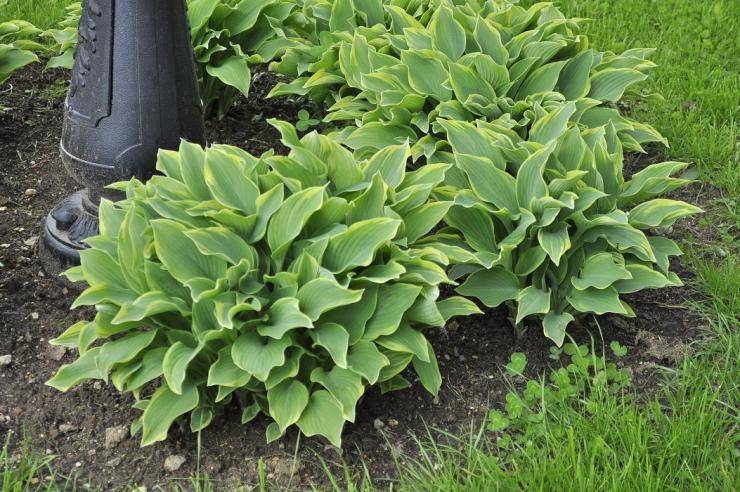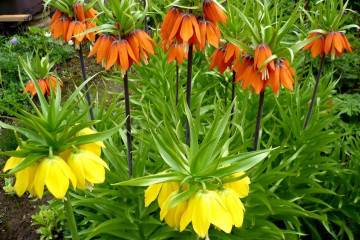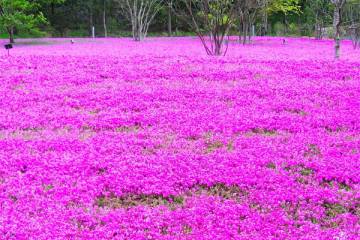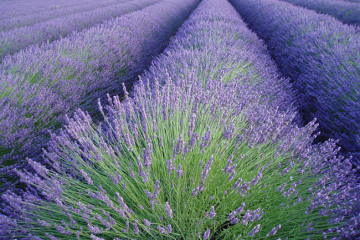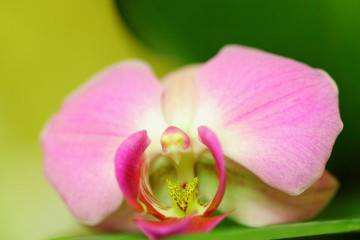When to transplant to host
Content:
Hosta belongs to the category of decorative herbaceous perennials of the Asparagus family. The foliage of the culture is quite dense. The size and shape of the leaf plates is varied. The ornamental characteristics of the plant were to the taste of gardening enthusiasts. Landscape designers often use the host when landscaping the local area. Unpretentious shade-tolerant bushes are able to withstand frosts and a prolonged sultry period. The information below will help you figure out when to transfer a host and how to properly perform this process.
When can the hosta be transplanted to another place: in spring or autumn
Florists recommend transplanting hosts in the first weeks of autumn. The plant takes about 30 days to take root.
Step-by-step process of autumn transplant:
- The planting area in the garden is dug up at the moment when the host can be transplanted to another place.
- A few hours before transplanting, the soil at the site is moistened.
- Superphosphate, ammonium nitrate, potassium sulfate are poured into the dug holes.
- The depth of the planting grooves depends on the size of the root system of the bushes.
- On the surface of the bottom of the pit, it is necessary to make a drainage system using pebbles or broken brick.
- The root system of the bushes is neatly placed in the holes. The void in the pit is filled with a large layer of fertile soil.
- The soil is compacted and abundantly moisturized. Re-watering is carried out after 3 days.
When planting several plants in one flower bed, it is worth placing them at a distance of 100 cm from each other.
Is it possible to transplant the host in the summer
Is it possible to transplant hosts in the summer? Floriculture experts recommend transplanting ornamental crops in September. However, if necessary, you can do this in the summer.
Shrubs that are transplanted in the summer take root quickly. Planting process:
- Before planting plants in the holes, the root system should be abundantly moistened.
- A layer of humus is poured onto the surface of the bottom of the depressions. The soil is moistened.
- With the help of a sharp object, the bush is very carefully pryed along with the root system and leaf plates.
- The sprouts are separated. Each cut must be treated with either a fungicide or brilliant green.
- As soon as the treatment has been completed, it is necessary to separate the cuttings from the bushes that have a pair of sprouts and plant them in the prepared holes.
While waiting for growth, it is important to control the condition of the plants. The leaf plates are almost completely removed. This promotes evaporation of a lower percentage of moisture and rapid growth of the root system.
Is it possible to transplant the host in June
If necessary, you can start transplanting plants in June. How to transplant to host in June? Each lush hosta prepared for planting in the hole should have a drainage system.Perfect for drainage:
- brick chips;
- crushed stone;
- fragments of clay containers;
- volcanic stones.
In order to properly transplant the bushes in June, you will need to adhere to a step-by-step process of work:
- When digging out bushes, it is necessary to grab a large lump of soil along with the root system.
- The root system is carefully separated from the old soil and rinsed under running water.
- When inspecting plants, you should cut off the affected areas with a sharp knife without regret. Places of cuts are processed with garden varnish and sprinkled with ash. In order to rejuvenate a perennial, you can cut roots that are too long.
- Each bush is divided into a couple of parts. For this purpose, it is worth using a sharp knife. The cut sites are abundantly treated with a fungicidal agent.
- The surface of the bottom of the hole is sprinkled with a layer of humus and dry foliage.
- The root system of the seedling is immersed in the hole and gently straightened.
- The void in the dug depressions is filled with a layer of soil. At the same time, the root system should rise slightly above the ground.
The surface of the earth is mulched. For this purpose, you can use fallen leaves or hay.
When can I plant the host and divide the bushes
How to divide the host bushes correctly? The procedure is carried out only when the perennial reaches its normal size. The division of mature shrubs helps to improve the appearance of the hosts. The division process can begin at the moment when the central part of the crown stops growing and begins to shrink.
After disembarkation, it will be possible to admire the gorgeous bush only in 5-6 years. Each of the varietal traits can appear as the parents grow. Frequent division can lead to the death of the crop or the loss of the main part of varietal traits.
You can do the division of the bushes:
- in spring - at the end of May;
- in summer - in any period (June, July, August);
- in the first weeks of autumn.
Experienced growers recommend dividing in the spring or in the first 2 weeks of September, which will allow the cuttings to quickly build up the root system. The time is selected individually depending on the weather conditions.
The process of division is most easily tolerated by perennials, whose age has reached 5 years. During this period, the plant is quite well developed. The procedure performed earlier will slow down the growth of the hosts.
Step-by-step process of dividing bushes:
- It is better to postpone activities for dividing shrubs to late spring or early autumn.
- Choose the right tools for the job. Dividing large bushes involves the use of a shovel. You can use a serrated knife to divide young bushes. In cases where the root system of plants is powerfully developed, flower growers recommend using a hacksaw for metal.
- Each cut is treated with a layer of ash, which will prevent rotting of the root system.
- Plants are dug under the root and carefully removed from the soil.
- The soil from the root system is washed off under running water, which will prevent incorrect cuts. Water is not able to damage the hard roots of the hosts, so you can safely clean the perennial under the pressure of water.
- The bushes are divided into seedlings (4 divisions). It is unacceptable to damage the root system. If the perennial has poorly developed roots, it is necessary to separate the sprouts with your hands. To separate the stems from the base of the plant, it is necessary to perform movements in the forward-backward direction. Large seedlings are cut with a serrated kitchen knife. To speed up the rooting process of a perennial, it is necessary to cut not the root system, but the base.
- The top is cut from the seedlings.
- The bushes propagated by the method of division are planted according to the 20x15 scheme. As soon as the young bushes gain strength and begin to grow in breadth, they can be transplanted to a permanent site.
It is best to plant the culture at once in permanent places.
How to feed the host for growth
Often this question worries novice florists who want to properly fertilize flowers. Experts recommend using organic and mineral fertilizers for feeding perennial crops in order to accelerate growth. Plant food residues are decomposed and processed by soil bacteria.
Organics must be used in the fall months. The introduction of fertilizers of this category will speed up the process of supply of nutrients to the root system of plants.
For feeding hosts in order to accelerate growth, experts recommend using:
- humus;
- rotted manure;
- wood ash;
- bone meal;
- green fertilizers.
Perennial plants are planted in loose, well-drained soil. On clay and sandy soil, the roots do not grow so well, since the clay soil dries quickly and begins to crack, and the sand helps to retain nutrients.
How to fertilize hosts in June
For the introduction of mineral dressings, one of the following methods can be used:
- root;
- foliar.
In the first method, fertilizer granules should be embedded in the loosened soil in the place where the bushes grow. You can also dissolve the granules in water and moisten the soil at the hosta planting site with the resulting liquid.
Often, experts advise to combine the introduction of organic matter and mineral fertilizing into the soil. In this case, the granules are scattered under the bushes of a perennial crop. Organic matter is mulched on top of the scattered granules. Under each plant, 10 liters of settled rainwater is poured.
The foliar method involves the use of a special complex fertilizer that can dissolve in water. The solution is used to treat the bottom and top of the leaf plates of green spaces. A garden sprinkler is used to complete the procedure.
Fertilizer for hosts
Experienced growers believe that the hosta needs a systematic application of organic fertilizers. In autumn, it is advisable to bring peat directly under the bushes, and in May it is better to dig a layer of peat into the ground. Compost and mulch can be used in autumn, spring and summer. Fertilizers will not only compensate for the deficiency of useful elements, but will also retain moisture, which is very important in the summer months.
If desired, you can feed the bushes in the spring with a small amount of mullein infusion, which will contribute to the active development of leaf plates. The use of phosphorus and potassium dressings will strengthen the root system of plants.
Hosta is an unpretentious crop that can be grown both in the Moscow region and in Siberia. Compliance with the recommendations for caring for flowers will allow you to grow healthy bushes that will retain their decorative qualities and become a real decoration of the garden plot, annually pleasing with flowering. To prevent the invasion of pests on hosts, it is necessary to use traditional methods of prevention. It is important to adhere to the recommendations of experienced florists, who explain when it is best to transplant hosts.


